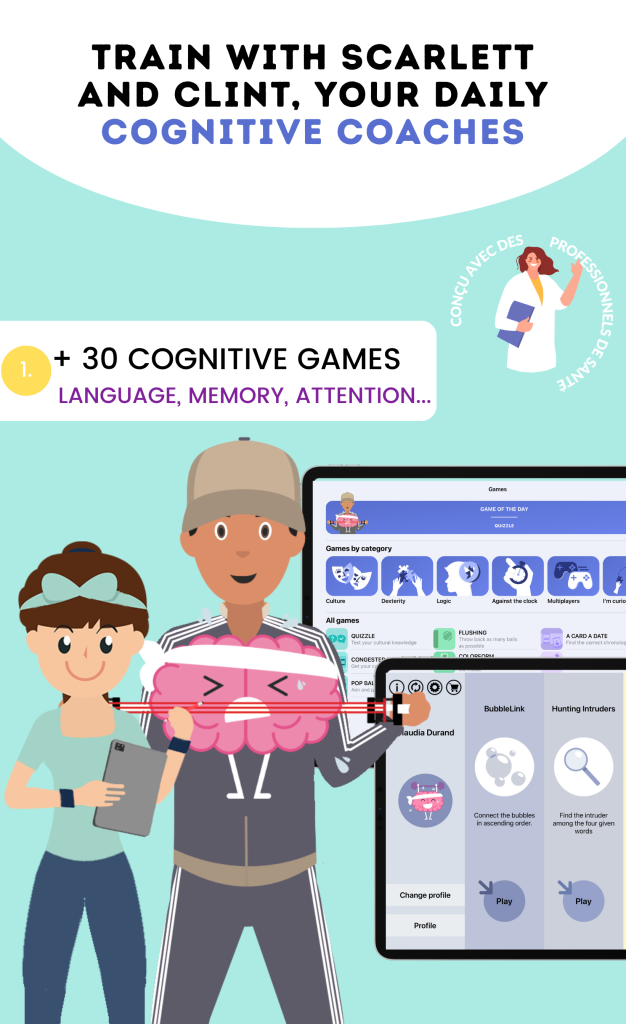Every year in France, nearly 50,000 people suffer from cardiac arrest. In the face of this vital emergency, time is of the essence: every minute without intervention decreases the chances of survival by 10%. It is in this context that the automated external defibrillator (AED) stands out as an essential piece of equipment, capable of saving lives when the heart suddenly stops.
What is a Defibrillator and How Does It Work?
A defibrillator is a medical device designed to analyze the electrical activity of the heart and deliver, if necessary, an electric shock (defibrillation) to restore a normal heart rhythm. During a cardiac arrest, the heart usually goes into ventricular fibrillation: it no longer beats in a coordinated manner and therefore cannot ensure blood circulation.
The automated external defibrillator is specifically designed to be used by the general public, without prior medical training. Once the device is opened and the electrodes are placed on the victim’s chest, it automatically analyzes the heart rhythm and determines if an electric shock is necessary. The device vocally guides the user at each step, making it accessible to everyone.
The Obligation to Equip Defibrillators in Public Establishments
Since the decree of December 19, 2018, the installation of a mandatory defibrillator in public establishments (ERP) has become a progressive reality in France. This obligation concerns different categories of establishments according to a precise schedule:
- Since January 1, 2020: ERP categories 1 to 3 (more than 300 people)
- Since January 1, 2021: ERP category 4 (less than 300 people)
- Since January 1, 2022: ERP category 5 hosting certain specific activities (care facilities for the elderly, covered sports facilities, train stations, etc.)
This measure aims to multiply access points to defibrillators and reduce the response time in case of cardiac arrest. The concerned establishments must not only equip themselves but also ensure the maintenance of the device, its clear signage, and its permanent accessibility.
The Different Types of Defibrillators
There are mainly three categories of defibrillators:
The fully automatic defibrillator (AED): it analyzes the heart rhythm and automatically delivers the shock if necessary, without human intervention. The user only needs to follow the vocal instructions and place the electrodes correctly.
The semi-automatic defibrillator (SAD): similar to the AED, but it requires the user to press a button to deliver the shock after analyzing the heart rhythm. This voluntary action ensures that no one touches the victim at the moment of the shock.
The implantable defibrillator: a medical device surgically implanted in patients at high risk of cardiac issues. It continuously monitors the heart rhythm and intervenes automatically in case of anomalies.
How to Use a Defibrillator: The Life-Saving Steps
Using a defibrillator is simple and intuitive, designed to be accessible even in situations of intense stress. Here are the essential steps:
- Call for help: immediately dial 15 (SAMU) or 18 (firefighters) before anything else.
- Turn on the defibrillator: as soon as the case is opened, the device activates and begins to give vocal instructions.
- Expose the victim’s chest: remove or cut clothing to access the chest. Dry the skin if it is wet.
- Attach the electrodes: place them exactly as indicated on the diagrams present on the electrodes themselves (one under the right collarbone, the other on the left side of the chest).
- Let the device analyze: do not touch the victim during the analysis. The defibrillator determines if a shock is necessary.
- Follow the instructions: if a shock is recommended, ensure that no one touches the victim and press the button (for a SAD) or let the device deliver the shock (for an AED).
- Continue resuscitation: alternate chest compressions and mouth-to-mouth breathing according to the instructions until help arrives.
It is important to note that a defibrillator will never deliver a shock if it is not necessary. The device is programmed to recognize heart rhythms that require defibrillation.
SECURIMED: A Reference Player in Defibrillators
In the field of rescue and first aid equipment, SECURIMED has established itself as an essential reference for professionals and establishments. This French company specializes in offering a complete range of automated external defibrillators suitable for all types of environments, whether it be businesses, public establishments, or local authorities. SECURIMED assists its clients in choosing the most appropriate equipment for their specific needs while ensuring comprehensive maintenance and training services. Their expertise covers the entire rescue chain, with solutions that include not only defibrillators but also protective cabinets, regulatory signage, and necessary consumables. Thanks to their in-depth knowledge of the current regulations regarding the obligation to equip defibrillators in public establishments, SECURIMED guides establishments in their compliance while ensuring certified quality equipment.
Cardiac Prevention: Particularly Important for Seniors
For the DYNSEO audience, primarily composed of seniors concerned about preserving their cognitive and physical health, cardiac prevention is of particular importance. With age, cardiovascular risks naturally increase due to several factors: atherosclerosis (hardening of the arteries), high blood pressure, diabetes, or family history.
Knowing the existence and location of defibrillators in one’s daily environment is part of a comprehensive health prevention approach. Just as brain training helps maintain cognitive abilities, vigilance regarding heart health and familiarity with first aid gestures are valuable assets for aging gracefully.
Many associations offer training in life-saving gestures, including the use of the defibrillator. These sessions, often free and tailored for seniors, allow participants to familiarize themselves with the device in a reassuring and educational setting. Knowing that one can intervene effectively in an emergency is a source of confidence and autonomy, essential values for aging well.
Warning Signs to Know
Recognizing the symptoms of cardiac arrest is crucial for quick intervention. The main signs are:
- The victim does not respond to stimuli (they are unconscious)
- They are not breathing or exhibit abnormal breathing (gasping)
- Absence of a detectable pulse
One should not confuse cardiac arrest with a heart attack (myocardial infarction), where the person usually remains conscious but feels intense chest pain. In both cases, emergency services must be called immediately, but only cardiac arrest requires the use of a defibrillator.
The Importance of the Chain of Survival
The concept of the “chain of survival” illustrates the four essential links to maximize survival chances in case of cardiac arrest:
- Early alert: quickly call for help (15 or 18)
- Cardiopulmonary resuscitation: chest compressions and ventilation
- Early defibrillation: rapid use of the defibrillator
- Specialized resuscitation: care by medical teams
Each link is indispensable. That is why the multiplication of defibrillators in public spaces, combined with raising public awareness of life-saving gestures, represents a major public health issue.
Where to Find a Defibrillator Near You?
Several resources allow you to locate defibrillators in your environment:
- The national database: the government.fr website lists the declared defibrillators in France
- Dedicated mobile applications: such as “Staying Alive” which geolocates the nearest AEDs
- Local signage: green signs with a heart and a lightning bolt indicate the presence of a defibrillator
It is recommended to identify defibrillators in places you frequent regularly: your residence, your sports center, your shopping mall, etc. This knowledge can make all the difference in an emergency.
Defibrillator and Overall Health: A Coherent Approach
In the philosophy of DYNSEO, which aims to promote the overall well-being of seniors through cognitive training, awareness of defibrillators is part of a broader health prevention approach. Taking care of one’s brain through regular exercises, as proposed by brain training applications, goes hand in hand with vigilance regarding cardiovascular health.
The two are intimately linked: good heart health ensures optimal brain irrigation, while stimulating brain activity contributes to maintaining an active and healthy lifestyle. Knowing the life-saving gestures and how to use a defibrillator is part of this holistic approach that allows individuals to take charge of their health and that of those around them.
Conclusion: A Simple Gesture That Saves Lives
The automated external defibrillator represents a major advance in the fight against sudden death from cardiac arrest. Its widespread deployment in public establishments, combined with its ease of use, makes it an accessible tool for everyone, without prior medical training.
For the DYNSEO community, composed of individuals concerned about their health and well-being, learning about defibrillators and their use is a civic act of prevention. Just as regular brain training strengthens our cognitive abilities, knowledge of first aid gestures and the use of the defibrillator empower us to act effectively in the face of cardiac emergencies.
Remember: in case of doubt, it is always better to act. A defibrillator will never deliver a shock if it is not necessary, and every minute counts to save a life. Identify the defibrillators around you, familiarize yourself with their use, and you will become an essential link in this chain of survival that saves thousands of lives every year in France.
To go further: Inquire with your town hall or the French Red Cross to participate in first aid training. These training sessions, often short and suitable for all ages, will give you confidence in your ability to intervene effectively in an emergency.





